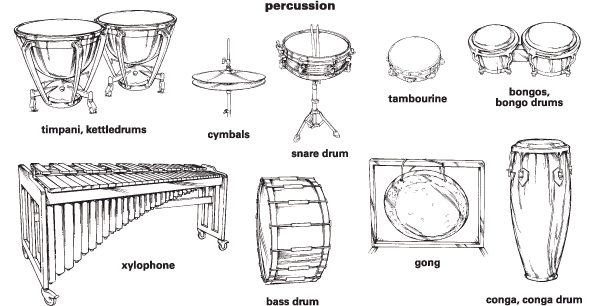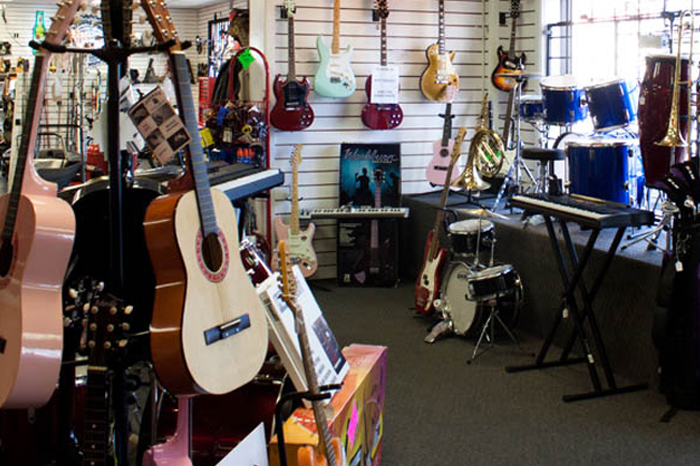Percussion instruments make sound when they are shaken, or when their surfaces are struck or scraped, either with bare hands or beaters. They are the simplest and most primitive musical instruments, with ancestors coming from the Middle East, Asia, Africa, Europe and the America.
Considered as the backbone of a musical ensemble, the family of percussion instruments is the largest in the orchestra. They provide rhythm and also play melody and harmony. They are often divided into two types: pitched and unpitched (or tuned and untuned).
Pitched percussion instruments produce musical notes that have identifiable pitches; in contrast, unpitched percussion instruments make sounds of indefinite pitch, like the sound of a knuckle knocking on a door. Unpitched percussion instruments like snare drums or cymbals are played to provide accents or maintain a rhythm. One of the ways to change the pitch of a percussion instrumentis to alter the surface tension of the surface that is struck, as in the case of membranophones like drums.
Drums are the most popular percussion instruments, but the catalogue of percussion instruments includes anything that has to be hit in order to produce sound. (After all, percussion means 'hitting one body against another.')
Drums make a sound when the drumhead (stretched membrane) is hit and the hollow body of the drum amplifies the sound. Some instruments make sounds when shaken, like the maracas; others resonate when hit, like bells. Tambourines, triangles, timpanis, xylophones, snare drums, chimes and gongs are just some of the more recognizable members of the percussion family.
Hitting anything to make it sound looks simple enough, but a percussionist has to hit the instrument, with just the right amount of strength, at the right place and at the right time. A percussionist may also have to play several other percussion instruments in a single piece of music. To do this well, consider signing up for online music lessons via Live Music Tutor to get access to music teachers who are masters of their instruments.
Join in today at Live Music Tutor in 3 simple steps; create your profile, select your Percussion Instructor and start learning today! Live Music Tutor is convenient – schedule lessons 24/7, customizable and user-friendly.






